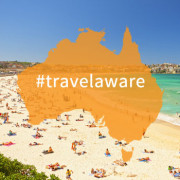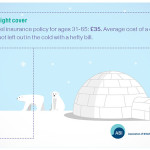Splashing a bus passenger with mud after driving through a puddle is illegal in NSW. Splashing them with water seems to be ok. And bad luck if you’re a regular pedestrian rather than waiting for a bus. Our point is that if you’re planning on driving your way across Australia, be prepared.
Just like the UK, you need a valid licence to drive in Australia. Unlike the UK, what counts as ‘valid’ varies from state to state.
In some states your UK licence will be fine. In others it will be fine for three months, after which you’ll need to get a state driving licence. And in other states you’ll need an International Driving Permit in addition to your regular licence.
Here’s how to find out what you’ll need for your trip: work out which states you’ll be travelling through and how long you’ll be staying in Australia. Then follow the guidance here.
Know the regulations
Just like the licence requirements, driving regulations in Australia vary from state to state. Often it’s the small details that are different, and it it’s all too easy to get caught out. For example:
- It’s illegal to run a red light everywhere. But in NSW, it’s also illegal to run an amber light.
- In Victoria you can’t drive a motor vehicle with an empty bicycle carrier attached to the rear.
- In NSW you (and your passengers) can be booked and/or pick up demerits (the Australian equivalent of points) for having a limb protruding outside the car. And that includes resting your elbow on the door sill.
- In South Australia you can be fined for the unsafe opening of a car door.
And don’t get us started on the rules surrounding mobile phones, where states variously require you to park your car, mount the phone, use hands free – or all three – before making a call.
The key to a safe and police-free Australian driving experience is to do the research. As Know Before You Go, the FCO’s travel advice campaign notes:
- “Research the driving regulations for the country you will be driving through and check your insurance policy to ensure you are covered for breakdown recovery, medical expenses and driving overseas.”
- “Prepare for driving abroad, research the regulations of what you are required to carry in your vehicle and ensure that your own, or hired, vehicle adheres to these. Remember, these are often very different to the UK.”
This post isn’t about scaring the bejesus out of you before you begin travelling Australia. But with more open road than anywhere else on earth and ever-changing rules, please take the time to do your homework before you set off.
Fallen foul of any Australian driving regulations you wish you’d known sooner? Tell us here.
Hiring a car in Australia
View our page on transport in Australia
Find out more about Know Before You Go





